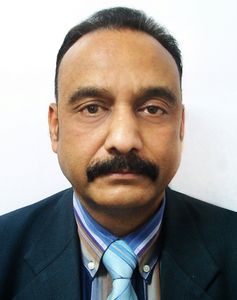A 62-YEAR-OLD patient was diagnosed with stage 1 breast cancer. After careful clinical examination, followed by an MRI, it was seen that she had a tumour of 1.5cm in the left breast without any swollen lymph nodes in the armpit. In consultation with the tumour board and medical physicist, it was decided that they could be managed with perioperative brachytherapy.
Brachytherapy, a form of radiation therapy, treats the patient from within. It has proven to be precise and effective in the management of cancer associated with the head and neck, breast, skin, prostate, cervix, rectum and uterus.
It is a tailored approach to provide precise radiation to the cancer tissues and it minimises damage to the healthy tissue around it.
The patient and caregivers were advised about the treatment benefits and demerits, and consent was obtained. The patient underwent a lumpectomy and, in the same sitting, plastic catheters were placed in and around the tumour bed. Simulation and planning for brachytherapy were done on the third day; from the following day, the plastic catheters were connected to a brachytherapy machine and radiation was delivered twice a day for five days. Other radiotherapy techniques require about five weeks.
Planning brachytherapy includes a careful clinical examination to understand (1) the size and location of the tumour and its correlation with the surrounding tissue (2) diagnostic measures to get a 3D picture of the tumour (3) strategy and approach to access and put applicators that are in the form of plastic catheters or tubes and (4) selection and placement of the radioactive material and dose calculations.
Some of the patient benefits include short treatment cycles and faster recovery time, and they might not even require hospitalisation.
For an oncologist, saving as many patients and their families from cancer is a life goal. Experience has shown that cancer not only affects the patient, but also the family. Therefore, management of cancer has to be done not only with a focused multimodal approach that includes radiotherapy, chemotherapy, and surgery, but also with a psychological support system for patient and family.
The 2020 WHO ranking on cancer burden placed India third in terms of new cases every year. Latest data from the National Cancer Registry Programme of the Indian Council of Medical Research shows around 14.6 lakh patients in 2022; this is estimated to go up to 15 lakh by 2025. There is a chance that the actual patient load could be 1.5 to 3 times higher than this. This number shows the immediate need to provide the best holistic care in cancer management.
With technology providers and doctors coming together, more clinicians are getting trained in brachytherapy. Hospitals with access to the right equipment and training provide better clinical outcomes for patients. Such measures will collectively support the fight against cancer.
The writer is former dean, AIIMS Rishikesh.



